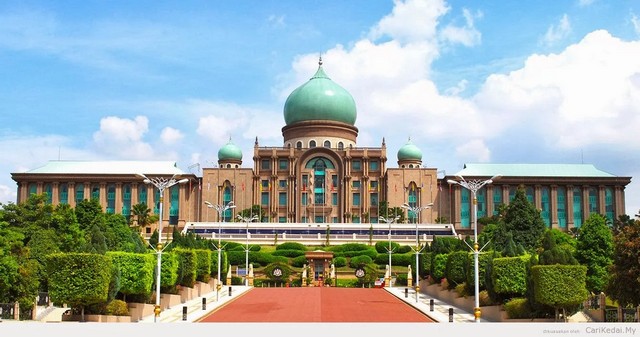The Challenges and Expectations of the SSPA
The Malaysian public service has long been a cornerstone of national development, driving policies and programs that meet the needs and welfare of the people.
However, the current public service system faces significant challenges, including low productivity, stagnant incomes, and the increasing cost of living.
To address these issues, the Malaysian government introduced the Sistem Saraan Perkhidmatan Awam (SSPA), an initiative aimed at reforming and improving the quality of public services in the country.
Yet, as with any ambitious reform, the implementation of the SSPA is not without its challenges. Balancing the aspirations of reform with the realities of the current system is a delicate task that requires careful consideration of both expectations and practical limitations.
The Need for Reform
The call for reform in the Malaysian public service is driven by several critical challenges. Over the past few decades, the public service system has undergone various changes, but persistent issues have remained. Low productivity, for instance, continues to plague many sectors, while the incomes of civil servants have not kept pace with the rising cost of living. Additionally, the fiscal sustainability of the country has become a growing concern, particularly in light of the government’s responsibility to manage the emoluments and retirement benefits of public servants.

The SSPA was introduced to address these challenges through a comprehensive approach that involves raising wages, revising the allowance structure, and improving talent management. The initiative also seeks to align the public service with the goals of the 12th Malaysia Plan, which emphasises the development of a high-performance public service that is capable of adapting to the demands of a modern, digital economy.
Challenges of Implementing SSPA
While the objectives of the SSPA are clear, the path to achieving them is fraught with challenges. One of the most significant challenges is the financial burden of implementing the new salary structure. The Malaysian government has announced a salary increase of over 13% for civil servants, effective from December 2024. This increase, the highest in the history of the Malaysian public service, is expected to improve the welfare of civil servants and reduce the pressure of the rising cost of living. However, the financial allocation required for this increase may exceed the RM10 billion allocated, raising concerns about the sustainability of such a move in the long term.

Moreover, the SSPA aims to correct the perception that the public service is overstaffed by focusing on the actual roles of civil servants. This requires a careful balance between reducing the workforce in certain areas and ensuring that critical services are not compromised. The government must also navigate the complexities of revising the allowance structure, which involves making changes that are fair and equitable across different grades of civil servants.
Public Expectations vs. Reality
The introduction of the SSPA has generated high expectations among civil servants and the public alike. Many view the initiative as a long-overdue reform that will finally address the systemic issues within the public service. For lower-ranking civil servants, the promise of a salary increase of 20 to 40 percent, depending on the details, is particularly appealing. The new salary structure is designed to be fairer, with higher increases for lower-ranking civil servants to help them cope with the rising cost of living.

However, there is a risk that the SSPA may not fully meet these expectations. While the initiative is expected to bring about significant improvements, the reality is that the implementation process will be gradual, with phase 2 of the new salary and pension adjustments scheduled for January 2026. Additionally, the focus on fiscal sustainability means that the government may need to make tough decisions about resource allocation, potentially leading to compromises that could affect the scope and impact of the reforms.
Government’s Commitment
Despite the challenges, the Malaysian government has demonstrated a strong commitment to the successful implementation of the SSPA. The Management Engagement Session (SLU), launched in August 2023, has involved over 6,000 public officials in discussions about the reform. This engagement has been crucial in gathering feedback and suggestions for improvement, ensuring that the SSPA is informed by the experiences and insights of those who will be directly affected by the changes.
The government has also been transparent about the timeline for the SSPA’s implementation, providing civil servants with clear information about what to expect and when. This transparency is vital in managing expectations and ensuring that the reform process is seen as fair and inclusive.
The SSPA represents a significant step forward in the reform of Malaysia’s public service, with the potential to improve productivity, enhance the welfare of civil servants, and ensure the fiscal sustainability of the country. However, the success of the SSPA will depend on the government’s ability to balance the ambitious goals of the reform with the practical realities of implementation. By maintaining a focus on fairness, transparency, and stakeholder engagement, the government can navigate these challenges and deliver a public service system that is both high-performing and sustainable in the long term.
References
- “Halaman Utama: Laman Kajian Sistem Sarana Perkhidmatan Awam”
- “Sistem Saraan Perkhidmatan Awam (SSPA) Dan Kenaikan Gaji Penjawat Awam”
- “[LIVE] Datuk Seri Anwar Ibrahim’s announcement at the 19th Majlis Amanat Perdana Perkhidmatan Awam”
- “Portal Sistem Saraan Perkhidmatan Awam — Jabatan Perkhidmatan Awam, Jabatan Perdana Menteri”






